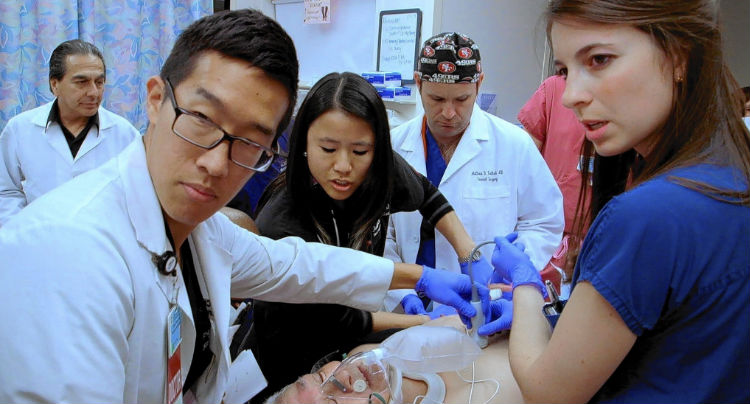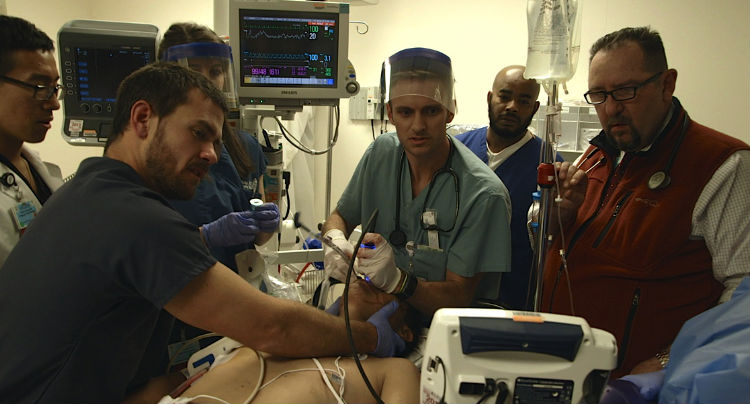
While unbalanced, Code Black provides a fascinating look into the heightened drama of emergency medicine.

While unbalanced, Code Black provides a fascinating look into the heightened drama of emergency medicine.
Ryan McGarry’s Code Black, an engrossing documentary about one of the busiest emergency rooms in the country, revolves around the idea that patient-doctor intimacy is a key factor in saving lives, and this intimacy is something the medical industry is quickly losing sight of. McGarry, who in addition to directing serves as one of the film’s prominent talking heads, brings to the film valuable first-hand experience, and it pays dividends; the film captures the extreme intensity of the ER in graphic detail while also providing intimate portraits of the tireless, dedicated doctors who make them run.
L.A. County General is a constant storm of activity, as it’s constantly serving a mob of uninsured patients who sometimes must wait over 18 hours for treatment. McGarry places us inside C-Booth, or the critical care unit, a 20×20 foot medical bay that handles patients with the most horrific injuries, from massive full-body burns to traumatic gunshot wounds. We see dozens of doctors huddled around a single patient on a gurney, working diligently to save their life, passing around instruments and constantly communicating. It’s a chaotic sight, with puddles of blood on the floor and a crowd of bodies in perpetual movement, but it’s a system that the doctors interviewed insist is the most efficient, despite the setup eschewing patient privacy and dignity.

Despite the doctors’ belief in C-Booth, L.A. County eventually got rid of it in favor of a more modern, state-of-the-art, sprawling ER that adhered better to fire and earthquake codes. With the new building came a new system of patient management where the doctors were flooded with endless paperwork. One doctor recalls an instance where filling out paperwork took four times as long as it took to actually help her patient. Compounding the problems was the loss of proximity with the patients, creating a distance that interfered with the ever-important doctor-patient relationship. Distressed and swamped with headaches, the doctors mull over how to recapture the essence of C-Booth.
The story of the doctors dealing with the troubles of the transition away from C-Booth takes up about half of the film, with the other half dedicated to the doctors talking about what motivated them to enter the field of medicine, and the pride they take in the grueling, often thankless service they provide to the community. The pressure they’re under to perform at their best at all times and the thrill that pressure brings is something few of us could ever begin to understand. A scene involving a group of young residents discussing work at a restaurant table is a nice touch, allowing us to see them interact outside of the hospital, though it somewhat diminishes the informative value of the film, as more of its mere 81 minutes could have been used to educate us about the major issues at play. The film’s cinematography is evocative and clean, capturing the high intensity of the residents’ small world at L.A. County.
An example of the film at its best, informing via a personal portrayal, is a short scene in which a 58-year-old, female, uninsured patient details how she went from being a former lawyer to her business dissolving and being forced to live out of her car. It’s heartbreaking stuff, and it illustrates the dire state of the L.A. County waiting room. While unbalanced, Code Black provides a fascinating look into the heightened drama of emergency medicine.